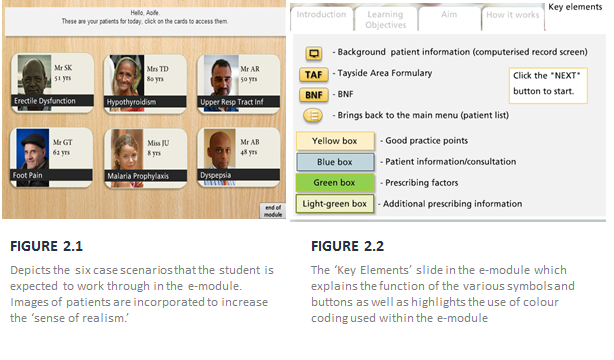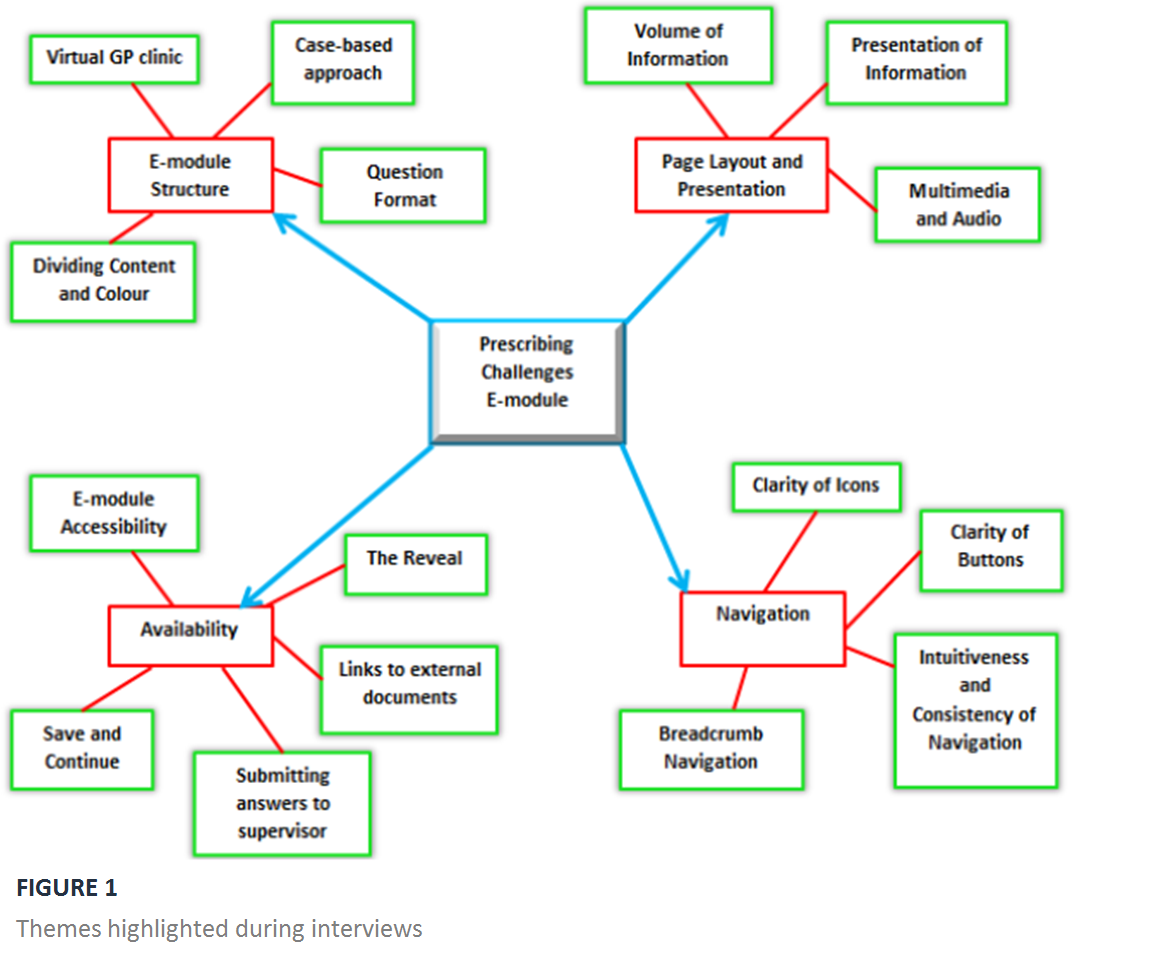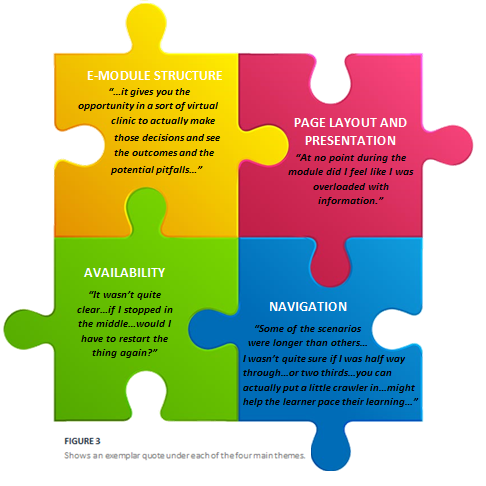



Theme
eP1 ePosters 1
INSTITUTION
uTCGP, Medical School Institute, University of Dundee
INTRODUCTION
According to the GMC, medical students must be able to “Prescribe drugs safely, effectively and economically''1.The “Prescribing Challenges in a GP surgery” e-module uses a virtual GP clinic and six genuine cases with the aim of providing a safe learning environment for students to apply their knowledge and demonstrate prescribing skills. The online module is directed towards 5th year medical students during their 4 week GP attachment, to complement face to face clinical experience.

AIMS
The instructional design and usability of an online module is known to have a significant impact on learning2-4. The main aim of this pilot study was to explore opinions relating to the instructional design and usability of the on-line prescribing module. An additional aim was to highlight potential improvements to maximise learner motivation and interest.


Key Findings
Navigation was satisfactory but issues arose due to a lack of clarity in icon function and closure of the VISION screen.
Promoting realism can increase engagement
An ability to ‘save and continue’ increases perceived availability.
Colour coding is useful, particularly for visual learners. Recognition and use may increase if colours with associated meanings are used.
Fifteen semi-structured qualitative interviews were conducted with 5th year medical students, university staff interested in e-learning and university/ NHS staff who are involved in the teaching of prescribing. The use of a virtual clinic, navigation and accessibility were some areas under investigation.
A thematic analysis was performed.
Learners thought that the instructional design of the e-module encouraged a structured, methodical, and therefore a safer approach to prescribing. The sense of realism promoted in the e-module, through the use of links to resources like the BNF as well as images and the VISION screen, increased motivation and prolonged interest.
If the areas for improvement highlighted are implemented, learner experience and satisfaction may be increased.
This pilot study will inform further qualitative work; thereby aid the development and evaluation of learning resources and their impact on prescribing.
• 1. General Medical Council. Tomorrow’s Doctors: Outcome 2- The Doctor as a practitioner. 2009. Available from: http://www.gmc-uk.org/education/undergraduate/undergrad_outcomes_2.asp (accessed 19 Aug 2015).
• 2. Ardito, C. et al. An approach to usability evaluation of e-learning applications. Universal Access in the Information Society, 2006; 4(3): 270-283.
• 3. Clark, R & Mayer, R. E-learning and the Science of Instruction: Proven Guidelines for Consumers and Designers of Multimedia Learning., 2008.Third Edi. R. Taff, ed., San Francisco: Pfeiffer.
• 4. Steele, D.J. et al. Learning preferences, computer attitudes and student evaluation of computerised instruction. Medical Education, 2002;36(3):225-232
 Send Email
Send Email